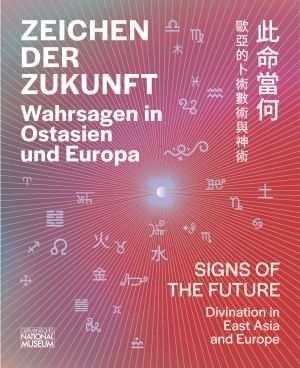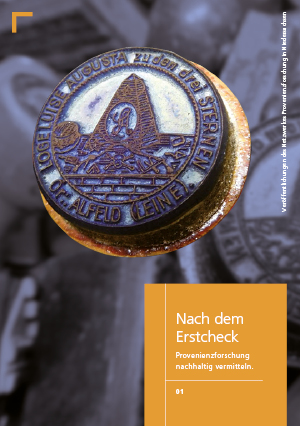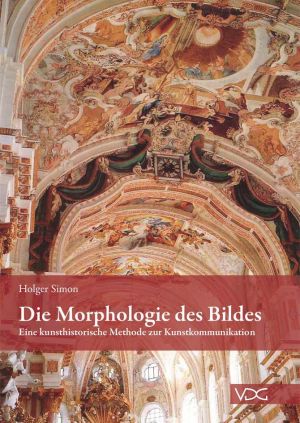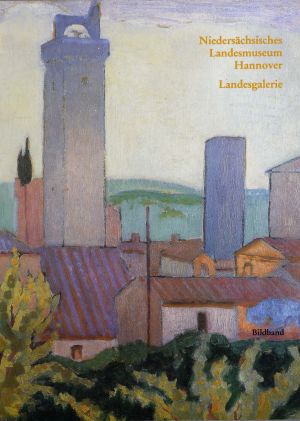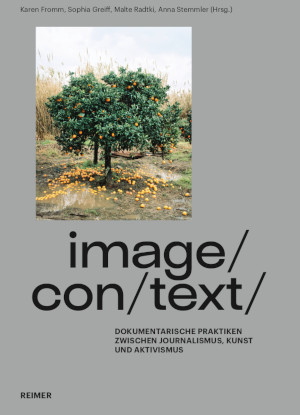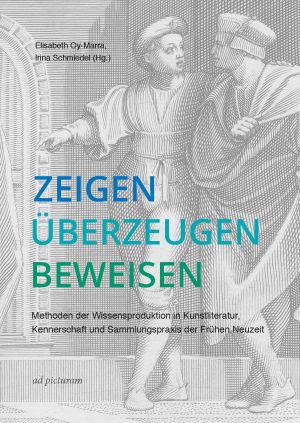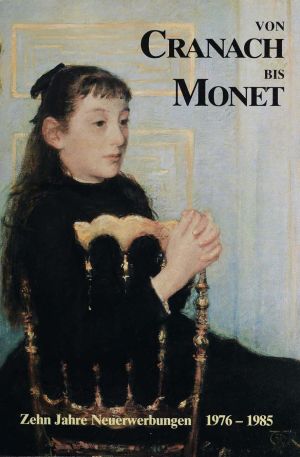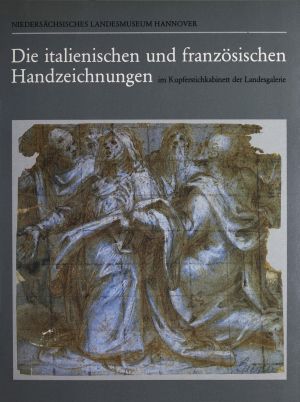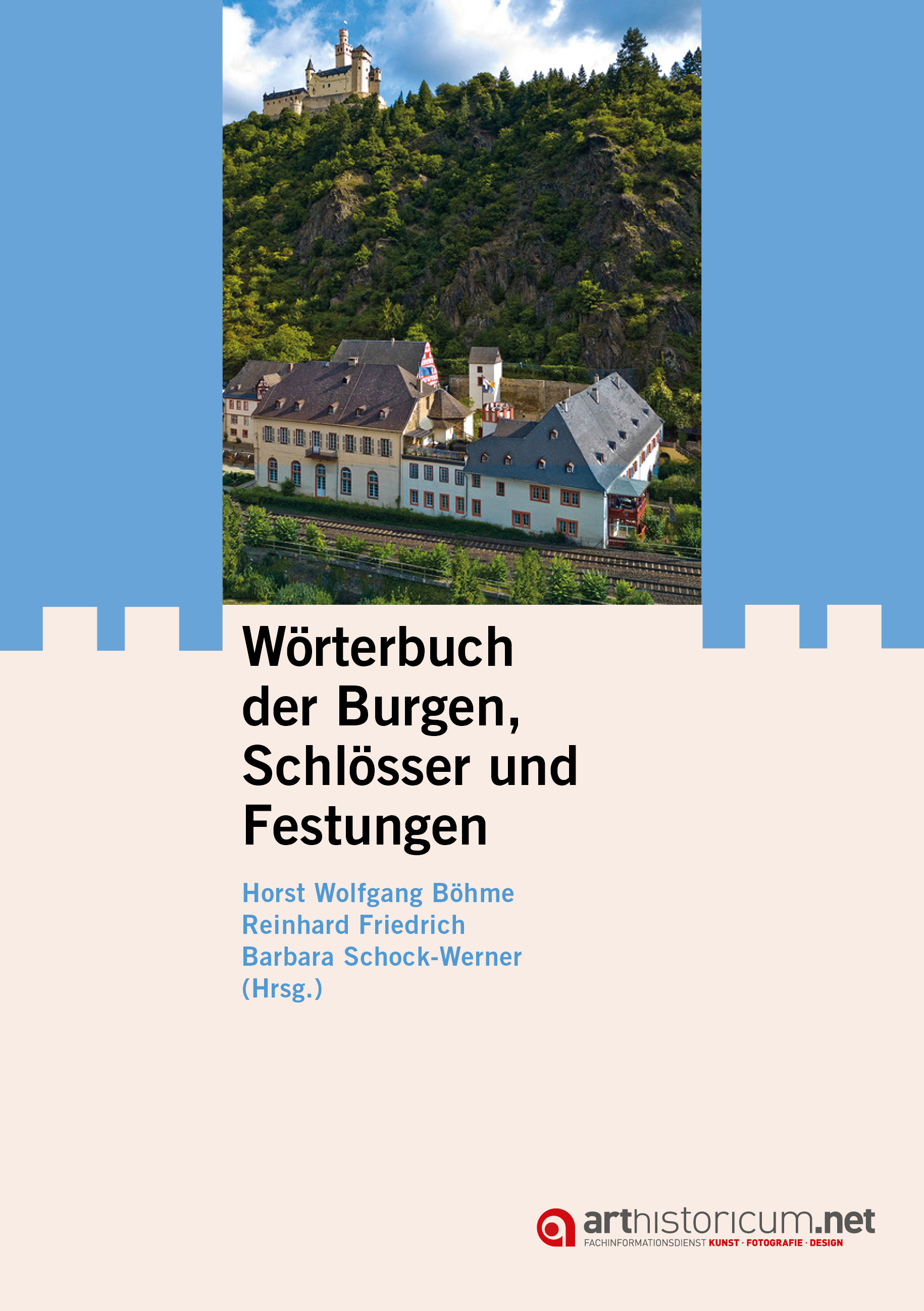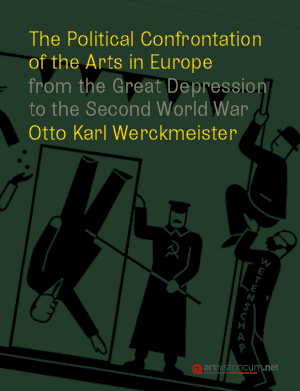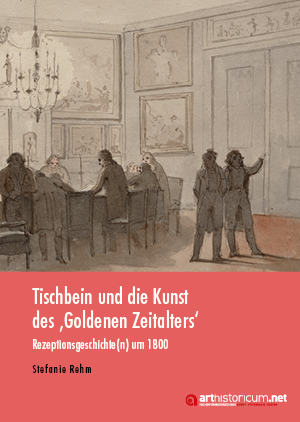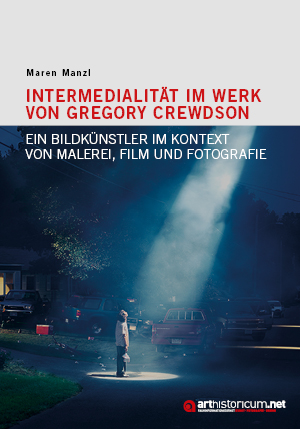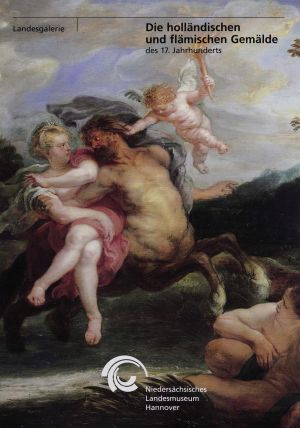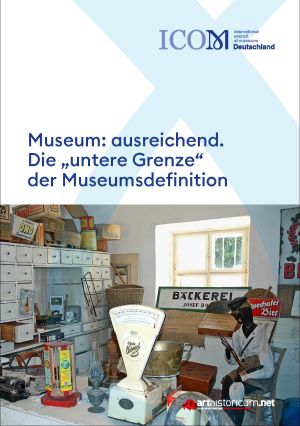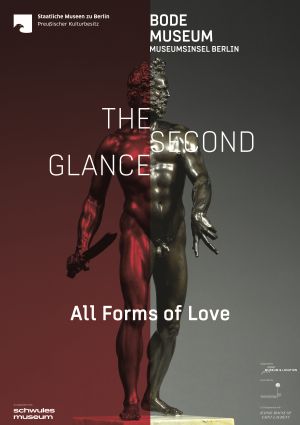Books
Leitfaden für digitales Sammlungsmanagement an Kunstmuseen
The hand-book serves as an introduction to the topic of digitization at art museums. It sets the focus on digital collection management and explains all steps related to the computer-aided documentation of a collection and the subsequent publishing and connecting data on the web. The guideline builds on internationally established standards as well as the direct work experience of the authors. The recommendations can be adapted to the individual needs and requirements of a museum, regardless of type and size. Valuable practical tips and literature recommendations make it a useful working tool.
Zeichen der Zukunft: Wahrsagen in Ostasien und Europa / Signs of the Future. Divination in East Asia and Europe
What will the future bring? The exhibition "Signs of the Future. Divination in East Asia and Europe" is the first to showcase instruments, methods and practitioners of fortune-telling in a cross-cultural dialogue. In this bilingual catalogue, leading international experts explore 130 objects from the Germanisches Nationalmuseum, the National Museum of Taiwan History and the Academia Sinica, including a Feng Shui compass, scientific instruments and even tarot cards.
Due to the COVID-19-Pandemic, the exhibition opening at the Germanisches Nationalmuseum, scheduled for December 2020, takes place in 2021.
Nach dem Erstcheck: Provenienzforschung nachhaltig vermitteln
The publication collects the contributions of the conference of the same name on 4 November 2019, that was organised by the Network for Provenance Research in Lower Saxony, the Regional Association of Southern Lower Saxony and the municipal Museum of Einbeck. Editors and authors discuss how the results of so-called "first-check" projects of provenance research for the search for and identification of Nazi looted cultural goods in city and regional museums in southern Lower Saxony can be sustainably documented, used in a participatory way and permanently made visible or communicated.
Der Stoff der Räume: Textile Raumkonzepte im französischen Interieur des 18. Jahrhunderts
In early modern European interiors, textiles played a crucial role as material and medium. Anika Reineke offers new research on the aesthetics of 18th-century art and the Rococo period, with a special focus on concepts of space, illusion, and decorative arts. By focusing on tapestries, silk wall coverings and folding screens, this transmedial study opens fresh perspectives on the shared authorship of craftsmen and artists, on visual effects of interior decoration and the ambivalent relationship between 18th-century guilds, manufactories, and academies.
Die Morphologie des Bildes: Eine kunsthistorische Methode der Kunstkommunikation
The study approaches art by focusing on visual perception and trying to answer the central question of how communication is possible through art, i.e. through perception. Taking sacred interiors of modern age as an example, the relationship between observer and image is problematized in order to identify the cornerstones of an art historical method based on a difference-theoretical concept of art (Luhmann, Spencer-Brown), with which the reception of images based on perception can be examined and interpreted with regard to art communication. Such a method is called Morphology of the Image.
Aufzeichnungen des Prof. Barvitius über seine Reise nach Dresden, Berlin u. München / Quellenband: Online-Edition einer Schlüsselquelle zur deutsch-böhmischen Museumsgeschichte des späten 19. Jahrhunderts
The demands on a modern museum are many and varied: How can a diverse audience be reached? How can an object be presented best? How can the security of artworks be ensured? These questions are not new, as handwritten records of the gallery inspector Victor Barvitius (1834-1902) from 1883 show. Barvitius had been entrusted with the establishment of the Prague Picture Gallery. In August and September 1883, Barvitius visited the Picture Galleries in Dresden, Berlin and Munich in order to learn about all aspects of museum life. He discussed with museum directors and restorers, studied visiting regulations, documented the condition of individual paintings, and observed everyday museum life.
Digitale Raumdarstellung: Barocke Deckenmalerei und Virtual Reality
Baroque ceiling painting as architecture-bound painting can be documented and explored in digital representations. Data-driven digital representations are a fairly new medium that has only just developed its specific aesthetic qualities, but in many areas has long since found its way into everyday life. Digital reconstructions of stately interiors are already frequently found in castles and museums. This volume provides a comprehensive insight into techniques and practices of digital reconstruction from the perspective of the corpus of Baroque ceiling painting in Germany and discusses current and future challenges in this field of research. In addition to practical approaches, it offers reflective and theoretical approaches to the subject. With the help of digital representations of space, new, previously rather marginal research questions can be answered. For research, research communication, mediation and citizen science, there are still untapped possibilities that are repeatedly raised in the volume. Instead of a general overview, the volume offers a concrete, research-led and art historical approach to the topic of virtual reality.
Die Gemälde des neunzehnten und zwanzigsten Jahrhunderts: Textband
Kataloge der Niedersächsischen Landesgalerie
The “paintings from the modernist art movement” held at the Landesmuseum were transferred to the Sprengel Museum prior to its opening in 1979. Thus, the catalogue of Ludwig Schreiner, published in 1973, was no longer up to date. The revised and enlarged edition from 1990 presents the works of art from the 19th and early 20th century which have remained in the Landesmuseum as well as those which have been acquired since 1973.
See the illustrated catalogue "Die Gemälde des neunzehnten und zwanzigsten Jahrhunderts"
Ludwig Schreiner. Newly edited by Regine Timm.
Die Gemälde des neunzehnten und zwanzigsten Jahrhunderts: Bildband
Kataloge der Niedersächsischen Landesgalerie
The “paintings from the modernist art movement” held at the Landesmuseum were transferred to the Sprengel Museum prior to its opening in 1979. Thus, the catalogue of Ludwig Schreiner, published in 1973, was no longer up to date. The revised and enlarged edition from 1990 presents the works of art from the 19th and early 20th century which have remained in the Landesmuseum as well as those which have been acquired since 1973.
See printed catalogue "Die Gemälde des neunzehnten und zwanzigsten Jahrhunderts"
Ludwig Schreiner. Newly edited by Regine Timm.
image/con/text: Dokumentarische Praktiken zwischen Journalismus, Kunst und Aktivismus
New journalistic and artistic narrative forms generate new perspectives for photojournalism and documentary photography, stretching and transcending the conventional bounds of the documentary form. This is seen very clearly in the medium of the photo book, but also in film, multimedia and the comic genre. Works building on a complementarity of evidence highlight the contextuality of photography, demonstrating how meaning can only be comprehended through a complex interplay of image, text and document. The strategies examined in this volume bring together journalistic, artistic and activist positions, weaving fact and fiction to reveal the constellations of power in the process of representation.
Zeigen – Überzeugen – Beweisen: Methoden der Wissensproduktion in Kunstliteratur, Kennerschaft und Sammlungspraxis der Frühen Neuzeit
Autopsie und Empirie erlebten in der Frühen Neuzeit einen erheblichen Aufschwung, der nicht zuletzt auch für die Betrachtung von Kunst konstitutiv war. Die hiermit verbundenen Strategien des Zeigens, des Überzeugens und Beweisens spielten nicht nur in der frühneuzeitlichen Wissenschaftspraxis eine tragende Rolle, sondern in zunehmendem Maße auch in der zeitgenössischen Kunstliteratur und der noch jungen Disziplin der Kennerschaft. Besonders deutlich wird die Bedeutung jener Konzepte zudem in den Bereichen der Sammlung und Präsentation von Zeichnungen. Hier bediente man sich verschiedener visueller und textueller Evidenzverfahren, etwa um spezifische Ordnungsmuster darzustellen, Zuschreibungen zu stützen oder weitere Informationen zu vermitteln.
Der Sammelband vereint einen Großteil der Beiträge des Workshops Zeigen – Überzeugen – Beweisen. Formen der Erzeugung und Vermittlung von Wissen in Kunstliteratur, Kennerschaft und Sammlungspraxis der Frühen Neuzeit, der vom 5. bis 7. Oktober 2017 im Rahmen des DFG-geförderten Projektes Die Materialität der Wissensordnungen und die Episteme der Zeichnung. Die Zeichnungsalben des Sebastiano Resta in Mainz stattfand.
Das Sehbare und das Unsehbare: Abenteuer der Bildanschauung. Teil 2: Caravaggio
Die Bildanschauung wird zu einem unvergleichlichen Abenteuer, wenn Kunstwerke intensiv betrachtet werden. Erst dann ist es möglich, tief in ihre Phänomenwelt und in die Eigenwirklichkeit der Malerei einzutauchen. Erst dann aktualisiert sich auch das genuine Wirkungspotential der Bilder. Im Mittelpunkt dieses Buches steht die Malerei Caravaggios. Genauer gesagt wird fast nur ein einziges Bild fokussiert: Das Emmausmahl aus dem Jahre 1606. Dieses Werk verhandelt in sich selbst auf besondere Weise die vom Bibeltext vorgegebene wundersame Thematik von Auferstehung, Augen-Öffnen, Sehen, Erkennen und Verschwinden.
Auch wir, die Betrachtenden, sind von diesem visuellen Erlebniszusammenhang noch heute ›betroffen‹. Um dem nachzugehen, wird eine detailreiche Reise in die großartige innere Struktur der Bildwelt dieses religiösen Ereignisbildes unternommen. Stets geht es um das, was für das Auge sehbar wird und um das, was unsehbar bleibt, aber dennoch nicht wegzudenken ist.
Die hier zur Sprache kommenden Bilderfahrungen werden schließlich ergänzt durch minutiöse Beobachtungen zu einem Emmausmahl von Diego Velázquez.
Die Ölskizzen in der Niedersächsischen Landesgalerie Hannover
Kataloge der Niedersächsischen Landesgalerie IV
For the first time this volume shows the collection of 221 works. The two convolutes include: oil sketches which were inherited from the Hannover painters Theodor Kotsch and Gustav Hausmann. Also presented are oil sketches held in the Kestner Museum as well as in the Hannoversche Künstlerverein.
Von Cranach bis Monet: Zehn Jahre Neuerwerbungen 1976 -1985
This catalogue from 1985 presents the new acquisitions which were made between 1976 and 1985. The new acquisitions focused on the consolidation of the key collections. The timeline ranges from Cranach up to Monet, but also works by Brueghel, Tischbein, Schwingen and Mackensen were acquired.
Die deutschen, französischen und englischen Gemälde des 17. und 18. Jahrhunderts
This catalogue from 1990 about the sub-collection from the Niedersächsische Landesgalerie replaces the volume published by Gert von der Osten in 1954. New conclusions have been integrated and academic standards have been adapted.
best of: 111 Stories from the WeltenMuseum
Why are fish in the Pacific more colourful than their relatives in the North Sea or the Baltic? Were there dinosaurs in Lower Saxony? Where did the first humans live? How did globalisation begin and when did art start?
This book provides answers to many such questions. In 111 objects, you are taken on a journey through the WeltenMuseum whose collections are a reflection of our world. Transcending space and time, they tell stories – from 240 million years old sea lilies to the present inhabitants of land and sea, from the Gamelan orchestra from faraway Indonesia to the gold necklace from Isenbüttel, from the earliest artisan products by the first humans to the world’s largest collection of German impressionists. Wonderful photos and captivating texts speak to all generations, providing an introduction to the secrets of our continent.
Die italienischen und französischen Handzeichnungen im Kupferstichkabinett der Landesgalerie
The Museum’s Kupferstichkabinett collects works of German, English, Dutch, Italian and French artists. The first three convolutes were indexed completely within the 1960s. The cataloguing of the Italian and French works was missing up until the publication of the volume (1987) presented here. The single graphic works are described through texts as well as images.
Wörterbuch der Burgen, Schlösser und Festungen
This work is only available as HTML version. A PDF download is not possible!
Castles, palaces and fortresses enjoy unbroken popularity, as they allow a direct insight into the past by making history, culture and everyday life tangible. As a worthwhile destination, they not only open their doors to visitors, but also offer those interested in history an opportunity for further occupation and research. With over 300 entries the reference book familiarizes readers with technical terms used in the construction of castles, palaces and fortresses. Types of buildings, components and building elements are explained. The explanation of terms is followed by a brief description of the historical development with the mention of selected examples. An introductory essay gives an overview of the historical development of castles, palaces and fortresses.
This digital new edition in dynamic HTML format is based on the print edition published by Reclam in 2004 and offers interactive navigation, linked cross-references and links to satellite views of the respective castle.
The Political Confrontation of the Arts in Europe from the Great Depression to the Second World War
Georg Bloch Annual, Vol. 24/25, 2019/2020
Between 1929 and 1939 the arts in Europe were politicized more than ever before. Government oversight, party agitation, and public pressure sought to make them serve domestic policies of social stabilization and foreign policies of antagonistic self-assertion. They were drawn into the struggles between the economic, social, and political systems which came to a head in the Second World War. As a result, they were entangled in a three-way ideological conflict between communism, fascism, and democracy. In a fast-moving course, art policies were enacted, and art ideologies were proclaimed, with doctrinaire assurance. This is what the author calls a political confrontation of the arts.
Tischbein und die Kunst des ‚Goldenen Zeitalters': Rezeptionsgeschichte(n) um 1800
The art of the 'Golden Age' of the Netherlands is often in the focus of art history, but rarely in Germany around 1800. This study remedies this deficit using the example of the 'Goethe-Tischbein's' trip to the Netherlands and thereby gains new insights into aspects such as pictorial knowledge, dissemination and reception of 17th-century Dutch art. Relationships and exchange between artists and experts, agents and collectors are examined as well as the innovative role of Johann Heinrich Wilhelm Tischbein: As a reliable eyewitness and skilled networker, he is way ahead of his time.
Die Internationale Kunstausstellung Dresden 1926 in historischen Aufnahmen von Alexander Paul Walther: Kommentierte Quellenedition
The 1926 Dresden International Art Exhibition was one of the most prominent of its kind during the Weimar Republic. Its achievements also formed the basis for the first documenta in Kassel in 1955. Historical photographs by the architectural photographer Alexander Paul Walther are used here to trace the appearance, intentions and impact of this major event.
These important photographic documents are held in the archives of the Staatliche Kunstsammlungen Dresden and have never before been published together and in full. This annotated edition has been produced by the Dresden Albertinum under the BMBF joint research project “From Object to Exhibit” as an inspiring basis for further research.
An English version is also available online: https://books.ub.uni-heidelberg.de/arthistoricum/catalog/book/916
Intermedialität im Werk von Gregory Crewdson: Ein Bildkünstler im Kontext von Malerei, Film und Fotografie
Born in 1962 in Brooklyn, photographer Gregory Crewdson stages large-format photographs with a view to the melancholic and alienated life in American suburbs. The main themes are apparently randomly captured scenes of interiors, front gardens, and street exits, in which the protagonists usually seem to be introverted. In addition to the presentation of Crewdson's complete oeuvre and the iconography of the images, the work primarily deals with and compares in detail references from the visual arts, photography, and film history. Crewdson's photographs are juxtaposed with works by Hopper, Eggleston, Wall and Sternfeld as well as films by Lynch, Spielberg and Hitchcock.
Die holländischen und flämischen Gemälde des 17. Jahrhunderts
“Today more than 200 Dutch paintings, Flemish as well as Netherlandish, are held in the Landesgalerie; the focus of the collection clearly lies on the Netherlandish works of art represented in approximately 153 paintings. Among the Flemish examples are those of Peter Paul Rubens, Jacob Jordaens, Frans Snyders and Anton van Dyck, the Netherlandish school is presented with an impressive selection of paintings by Rembrandt’s students such as Gerrit Dou, Arent de Gelder, Carel and Barend Fabritius or Nicolaes Maes.” (p. 12) – The catalogue published in 2000 is a completely revised edition of the catalogue by Gert von der Osten (1954).
Museum: ausreichend. Die ‚untere Grenze‘ der Museumsdefinition: Tagungsband des Internationalen Bodensee-Symposiums 2018
The quantity and diversity of museums is increasing; but what about “hard criteria” for differentiating museums and non-museums? The Austrian-German-Swiss conference “Bodensee-Symposium 2018” discussed interesting case studies of drawing this definitional line by outsourcing if the museum staff does not have certain competences, by clear renunciation of one of the five main tasks of museum work because the capacities of the museum are insufficient for realising this task, or by external assessment and certification if this institution fulfils the expected level of museum work (or not). This volume closes with reflections of the museum definition by representatives of institutions which are only similar to museums (a private art collection, university collections, a product archive of a commercial company).
The Second Glance: All Forms of Love
The Second Glance is a new exhibition series that provides a multi-perspectival engagement with the permanent collection of the Bode Museum through themes of contemporary social relevance. The objects in the collections cover over 1,500 years of Europe’s artistic and cultural history, making them particularly well-suited for exhibition formats that deal with human identities and their artistic embodiment. "All Forms of Love", the first installment in the series, offers a second look at works that, in a variety of ways, provide access to the theme of the diversity of sexual identities.
Further Publication: Second Glance: Women




